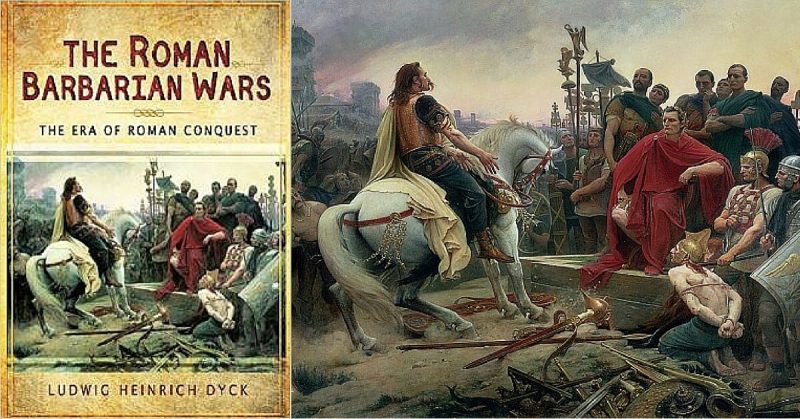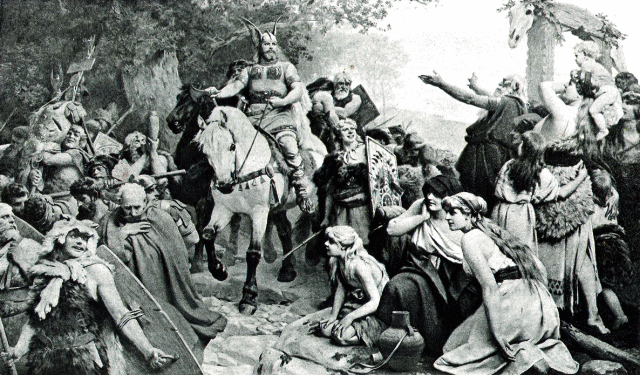Roman wars against “barbarians” can often be very difficult to cover. In victory, they can be deemed inconsequential or unworthy of special mention by ancient writers, and defeats against “inferior barbarians” were more likely to be explained away or just forgotten about. Even when we have great sources, such as Caesar’s own writings for the Gallic Wars, it can still be a topic with incredible bias. Ludwig Dyck has put together a great book that summarizes pieces of Roman military history that are often not mentioned or difficult to find sources for.
The book’s chapters are largely chronological, with coverage of certain tribes, regions and Roman war within them being the focus so some time jumps occur to give full accounts. Unlike most Roman history works, this one glosses over some of the most major conflicts of Roman history, like the Punic Wars, to give attention to such tribes as the Ligurians, and the important barbarian wars fought between these larger and more documented wars.
The author makes it known that the book is a heavily edited compilation of a series of independent articles that work together to form this complete picture of the Roman’s experience with barbarians. In a sense that makes the book easy to have as a reference, as any chapter can be read without needing to reorient with a previous chapter. The downside is that some of the details can get a bit repetitive, such as giving a lengthy overview of the backstory of a tribe that was covered in detail just pages earlier in the previous chapter.
The scope of this book should also be mentioned as many might think that the fall of Rome to barbarian invaders would be a heavy focus. Dyck tries to clarify with the subtitle “The Era of Roman Conquest” though that is still slightly unclear. Coverage of the barbarian wars stops a few years after the disaster of Teutoburg Forest. The Romans had yet to conquer Britain or Dacia, two key Roman conquests that the book only really mentions in the last overall paragraph.
The research for this must have been quite difficult, as it spans centuries of unclear and sparsely documented conflicts. Occasionally some inaccuracies occur when glossing over other conflicts, but the core of the book regarding the barbarians seems to be largely accurate. For general reading, the endnotes do a decent job, especially when dealing with controversial or undecided topics such as the lineage of certain tribes. Usually, Dyck will pick a side of the argument and move on by the endnote can go in depth on the intricacies of a particular historical argument. This is great to have as history is constantly evolving and new ideas and theories clash over countless aspects of history that many might take as simple fact.
For solid research, however, this book could use some more notes, particularly for scenes of extraordinary or improbable action. Essentially every quote has a nice note showing where exactly it came from, but many passages seem like they should have a note, for verification or as a launching point for more research. For example, when discussing a barbarian war in Spain, Dyck describes the exceptional Spanish cavalry. Special mention is made that the Spanish worshiped horses, adorned them with trappings that included bells around their neck, and that Spanish horses could kneel and be quiet on command. There is even a mention that the Spanish may have invented the horseshoe. None of this has a note, disappointing from a research perspective. A list of sources is given at the end, divided by chapter, but it would be difficult to pinpoint which source gave that particular information on Spanish horses.
Because each of these articles was written to engage the audience, they are full of fascinating depictions of battles and events. From the sources, there is simply a lot we don’t know, but Dyck does a great job of creating an uninterrupted and complete picture of these various events. Getting the feeling of being transported to another time is usually the realm of historical fiction, but Dyck does such a great job of presenting the story that he can allow the reader to really see the events.
Overall, it is a short succinct overview of the Roman barbarian wars until Teutoburg. Even knowing a fair amount about Republican Rome, I found some interesting insight on some of the lesser discussed Barbarian wars, and I enjoyed reading about the famous story of Juno’s Geese saving Rome in chapter two, as well as the iconic quote “Woe to the Vanquished” in that same chapter. Overall it is an entertaining read, great for those wishing to cover some gaps in their knowledge of Republican Rome without pushing through a 1,000-page epic.
By William McLaughlin for War History Online

